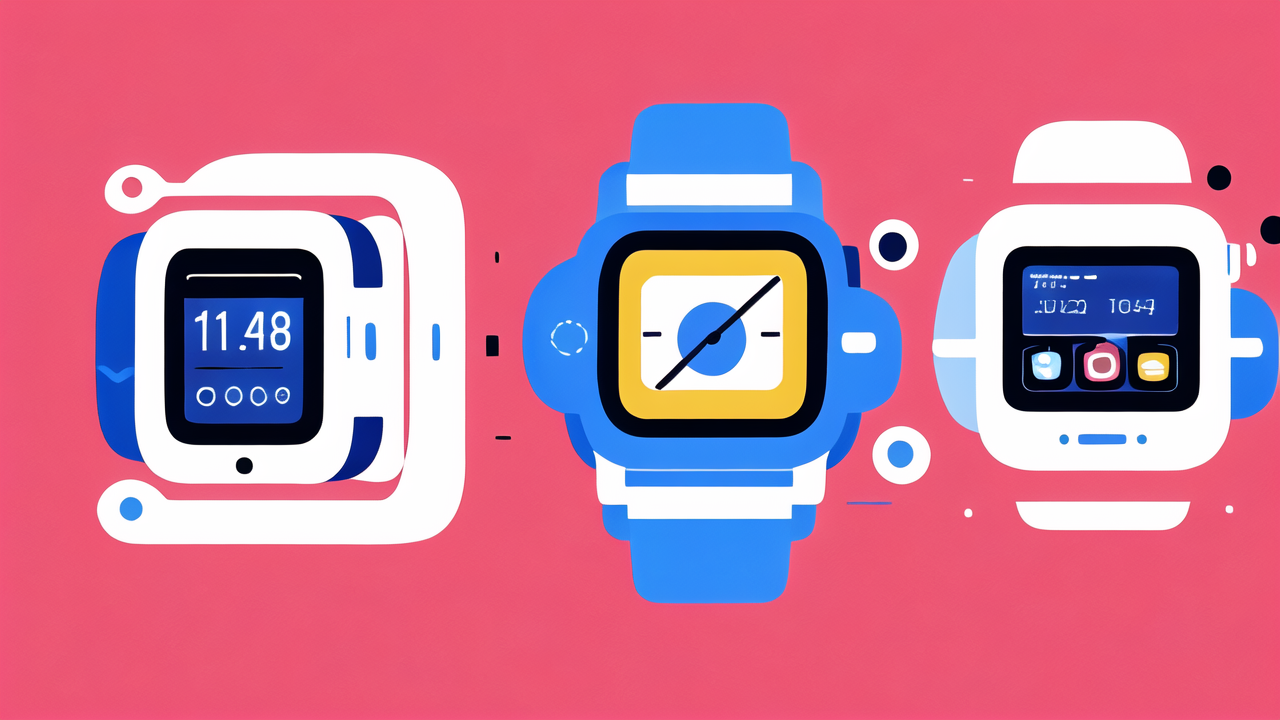Understanding Smart Watch Operating Systems
Exploring Market-Leading Smart Watch OS Solutions
Smart watch operating systems power these wearable devices. Wear OS, made by Google, is a popular choice. It works well with many Android phones. It offers a wide range of apps and features. Apple's watchOS is another major player. It only works with iPhones, but it's known for its smooth performance.

Samsung's Tizen OS is praised for its long battery life. Fitbit OS focuses on health and fitness tracking. Each system has its own strengths. Wear OS is great for customization. WatchOS offers a polished experience. Tizen balances features and efficiency. Fitbit OS excels in fitness tracking.
How Smart Watch OSs Function
Smart watch OSs are designed for small screens and limited power. They use simple controls like taps and swipes. These systems manage apps, track fitness data, and handle notifications. They also control sensors like heart rate monitors and GPS.
The OS coordinates with hardware to track fitness data. It manages battery life through power-saving modes. Smart watch OSs sync with phones to share data and notifications. They often use cloud services for extra features and storage.
Many OSs allow third-party app development. This expands the watch's capabilities. Regular updates add new features and improve performance. The OS also ensures compatibility with different phone models and other smart devices.
Key Features of Premium Smart Watches
Health and Fitness Tracking Capabilities
Top smart watches are powerful health monitors. They track heart rate, steps, and sleep patterns. Many can measure blood oxygen levels and take ECG readings. Some watches can detect falls and call for help in emergencies.
These devices use various sensors to collect data. Accelerometers track movement. Optical sensors measure heart rate. GPS chips record location for outdoor activities. Some include altimeters for elevation tracking.
Premium models often provide personalized health insights. They analyze data to suggest improvements in fitness and sleep. Many integrate with popular health apps. This creates a complete picture of your well-being. Some offer guided workouts or stress management features.
Connectivity and Communication Options
Modern smart watches offer many ways to stay connected. They show notifications from your phone. Many allow you to reply to messages or take calls. Some watches have cellular connectivity for use without a phone.
Wi-Fi allows for app updates and music streaming. Bluetooth connects to phones and wireless headphones. NFC enables contactless payments. This lets you pay without needing your wallet or phone.
Voice assistants like Siri or Google Assistant offer hands-free control. Some watches have social media features. Email and calendar apps help manage your day from your wrist. These features make smart watches powerful communication tools.
Customization and Personalization
Premium smart watches are highly customizable. You can change watch faces to match your style or needs. Many allow downloading additional faces from app stores. Some let you create custom faces with personal photos or data.
App selection is key for personalization. You can choose apps based on your interests and needs. This might include fitness trackers, productivity tools, or games. Many watches allow customizing notification settings.
Some models offer adaptive features that learn your preferences. They might adjust screen brightness based on your habits. Or they could prioritize certain notifications at different times of day. This personalization makes the watch more useful over time.
Battery Life and Charging Technologies
Innovations in Longevity and Power Efficiency
Battery life is crucial for smart watch usability. Most premium models last 1-2 days on a single charge. Some basic models can go up to a week. Power efficiency is improving through better hardware and software.
Low-power modes extend battery life by limiting features. Some watches use ambient light sensors to adjust screen brightness. This saves power in different lighting conditions. Efficient processors help manage power use.
Charging technologies are advancing. Wireless charging is becoming standard in high-end models. Some use magnetic charging cables for convenience. Fast charging allows quick top-ups during the day. Some watches even experiment with solar charging for extended use.
Compatibility with Smartphones and Other Devices
Seamless Integration with Various Platforms
Smart watches work best when paired with smartphones. Most are optimized for specific platforms. Apple Watches work only with iPhones. Wear OS watches pair well with Android phones but offer some features for iPhones too.

Many watches can connect to other smart devices. They might control smart home gadgets or sync with fitness equipment. Some can unlock your phone or computer when nearby. This integration creates a more connected ecosystem.
Cross-platform compatibility is improving. Third-party apps can bridge gaps between different systems. Cloud services allow data sharing across devices. This flexibility makes smart watches more versatile for users with mixed device ecosystems.
Durability and Design Considerations
Weather Resistance and Material Quality
Premium smart watches are built to last. Most offer water resistance for swimming and showering. Some are rated for depths up to 50 meters. This makes them suitable for most water activities.
Material quality varies by model and price. High-end watches often use premium materials like stainless steel or titanium. Scratch-resistant glass or sapphire crystal protects the screen. These materials ensure the watch looks good and functions well over time.
Durability features include reinforced cases and raised bezels. These protect the watch from impacts and scratches. Some models meet military-grade standards for toughness. This means they can handle extreme temperatures, dust, and shocks.
Navigation and GPS Functionalities
Accuracy and Reliability of Location Services
GPS is standard in most premium smart watches. It allows accurate tracking of outdoor activities. Many watches use multiple satellite systems for better accuracy. This helps in areas with poor signal, like cities with tall buildings.
Advanced models offer offline maps and navigation. This is useful for hiking or traveling without a phone. Some watches include compasses and altimeters for more detailed navigation. These features are great for outdoor enthusiasts.
GPS accuracy can vary based on conditions. Buildings and trees can interfere with signals. High-end watches use techniques like assisted GPS to improve accuracy. They might also learn your common routes to predict locations and save power.
Security Features
Protecting User Data and Privacy
Security is vital for devices that hold personal data. Most smart watches use encryption to protect information. This includes health data, messages, and payment details. Many require PIN codes or biometric authentication to access features.

Privacy settings allow users to control data sharing. You can choose which apps access your health information. Some watches offer "find my device" features for lost or stolen devices. Regular software updates are crucial for security.
Some watches include features to erase data remotely. This protects your information if the watch is lost or stolen. Advanced models might offer secure storage for sensitive data. This keeps your information safe even if the watch is compromised.
The Future of Smart Watch Technology
Emerging Trends and Predicted Advancements
Smart watch technology is rapidly evolving. Future models may include more advanced health sensors. They might monitor blood pressure or glucose levels continuously. This could make them valuable tools for managing chronic conditions.
Battery technology is expected to improve significantly. We might see watches that last weeks on a single charge. New display technologies could offer better visibility and energy efficiency. Flexible or expandable screens might change how we use smart watches.
AI and machine learning will play bigger roles. Watches may offer more personalized health insights and predictions. They could detect health issues before symptoms appear. Integration with other devices will likely expand. Your watch might become the control center for all your smart devices.




Leave a comment
This site is protected by hCaptcha and the hCaptcha Privacy Policy and Terms of Service apply.